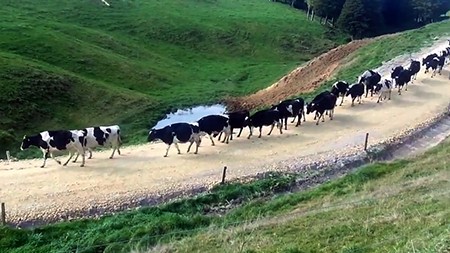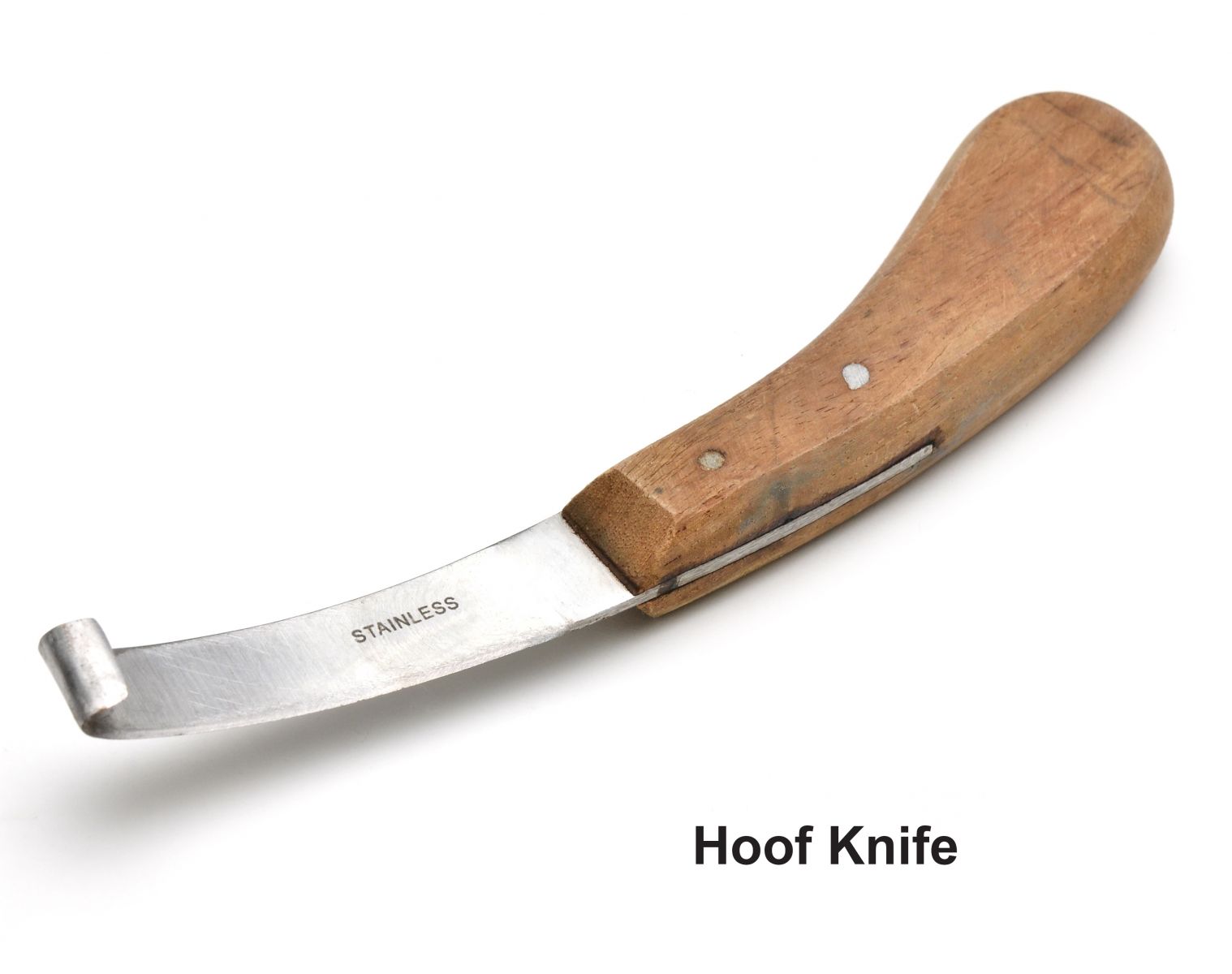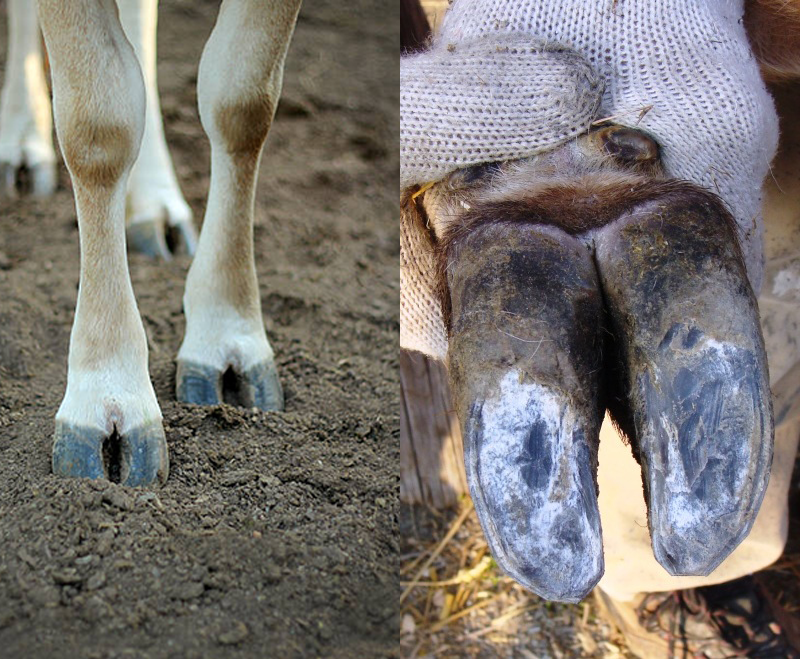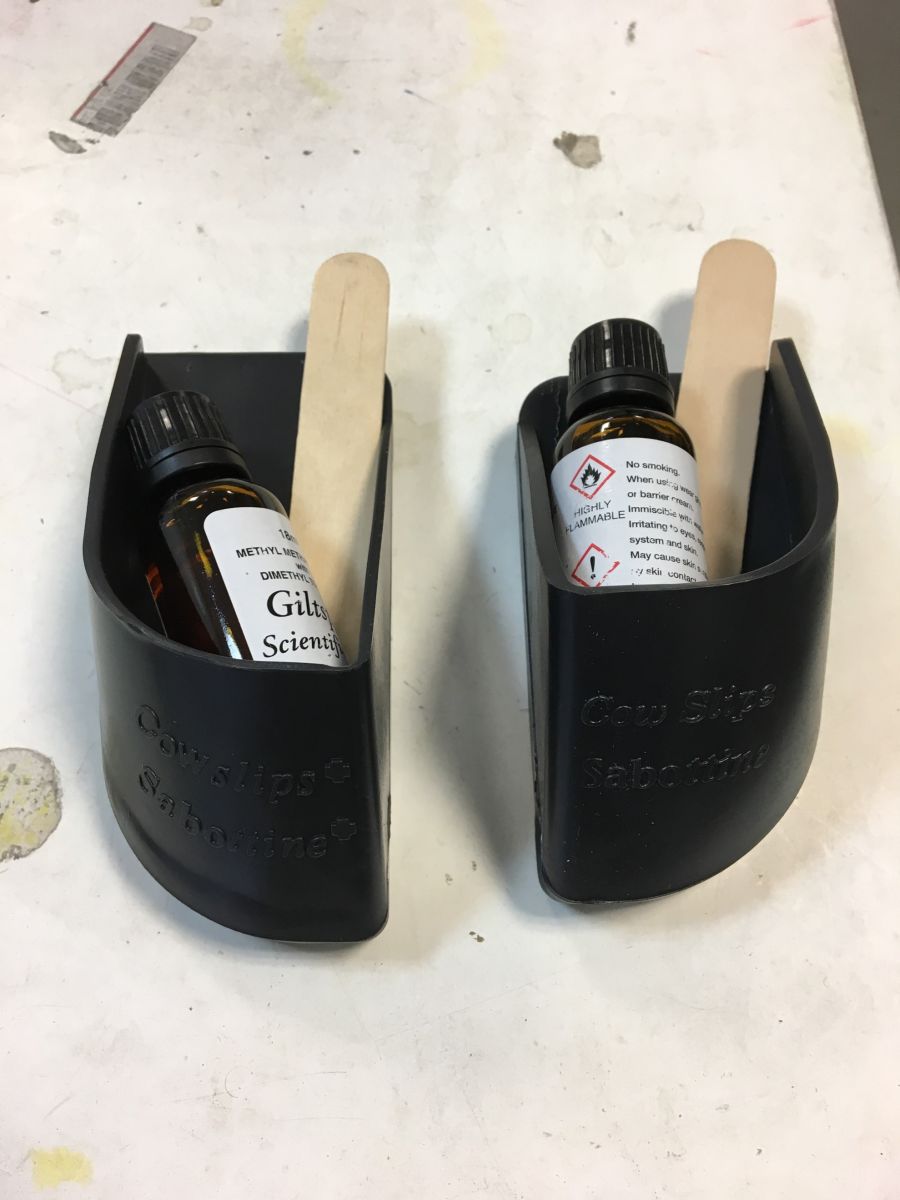You know that feeling in your feet after you’ve been walking all day? Or when your toe nails get a little too long? Believe it or not, cows can experience the same thing! We use our feet to get around everyday and so taking care of them is important; the same goes for cows. Hoof care is crucial in maintaining a happy, healthy, and productive herd no matter where cows are in the world. In Canada, cows often split their time between being inside the barn and out in the fields. When in the barn, their food is brought to them by the farmer so they don’t often have to search for it. Cows have their hooves trimmed regularly by trained  professionals to make sure the bottom of the hoof, or the sole, and the sides, or the wall, are balanced. Balancing the hoof allows for even weight distribution on all four legs, with the average dairy cow in Canada weighing 500 kg, that’s a lot to carry!
professionals to make sure the bottom of the hoof, or the sole, and the sides, or the wall, are balanced. Balancing the hoof allows for even weight distribution on all four legs, with the average dairy cow in Canada weighing 500 kg, that’s a lot to carry!
Hoof care is even more important in New Zealand. Here, cows spend their entire lives outdoors moving from pasture to pasture as they eat grass and other crops grown by the farmer. Additionally, twice a day the cows walk to the milking parlour along a path that winds through the farm. Between pastures and the milking parlour, dairy cows in New Zealand can walk as far as three to four km a day! With all that walking it is easy to see how a hoof can get damaged causing a cow to limp. A cow that is limping or favouring one foot is known as being “lame” or exhibiting signs of “lameness”. This is where the veterinarian comes in!
 Farmers are very good at picking out lame cows and know to call the veterinarian right away. Since coming to New Zealand I have been fortunate enough to help treat many lame cows – seeing them walk away feeling better is a great feeling! So how do we treat them? The cow is first gently restrained in a squeeze-chute and the affected hoof is elevated. There are a few tools that every veterinarian will have in their lameness kit, the most important of which is called a hoof-knife (picture).
Farmers are very good at picking out lame cows and know to call the veterinarian right away. Since coming to New Zealand I have been fortunate enough to help treat many lame cows – seeing them walk away feeling better is a great feeling! So how do we treat them? The cow is first gently restrained in a squeeze-chute and the affected hoof is elevated. There are a few tools that every veterinarian will have in their lameness kit, the most important of which is called a hoof-knife (picture).
 On each foot, cows have two hooves commonly called claws. Each claw is made up of bone surrounded by thick layers of keratin, the same material that make up our finger and toe-nails. Just like we would use a clipper to trim our nails, veterinarians use a hoof-knife to trim away excess keratin from the claw. If sharp stones damage the sole of the foot it can create a small gap that will allow bacteria to crawl in and form an abscess underneath, ouch! Veterinarians use the hoof knife to carve out the abscess in the keratin and then flush it out with water and iodine to help remove bacteria and other debris. This also allows the abscess to drain and immediately removes the pressure on the hoof from the abscess – what a relief! Before sending them off, cows will also be given a pain-killer similar to Tylenol or Advil which will help reduce the pain and inflammation as the hoof heels. If the veterinarian has had to carve out a lot of keratin off the affected claw a plastic cow-slip is glued to the opposite claw of the hoof to keep the damaged claw off the ground allowing it to heal. These come in a variety of colours and look like the cow is wearing a slipper! (See photo below on right)
On each foot, cows have two hooves commonly called claws. Each claw is made up of bone surrounded by thick layers of keratin, the same material that make up our finger and toe-nails. Just like we would use a clipper to trim our nails, veterinarians use a hoof-knife to trim away excess keratin from the claw. If sharp stones damage the sole of the foot it can create a small gap that will allow bacteria to crawl in and form an abscess underneath, ouch! Veterinarians use the hoof knife to carve out the abscess in the keratin and then flush it out with water and iodine to help remove bacteria and other debris. This also allows the abscess to drain and immediately removes the pressure on the hoof from the abscess – what a relief! Before sending them off, cows will also be given a pain-killer similar to Tylenol or Advil which will help reduce the pain and inflammation as the hoof heels. If the veterinarian has had to carve out a lot of keratin off the affected claw a plastic cow-slip is glued to the opposite claw of the hoof to keep the damaged claw off the ground allowing it to heal. These come in a variety of colours and look like the cow is wearing a slipper! (See photo below on right)
 While veterinarians are well prepared to treat lame cows, preventing lameness is always the most effective way to ensure cow comfort. And so discussions with the farmer on how to minimize damage to the hoof and surrounding tissue are a very important part of the veterinarian’s job. Pastures that are too wet will soften the hooves and increase the likelihood of injury and infection. Cows that do not have enough room to move will not experience normal wear and tear and their hooves can become too long making walking uncomfortable. Cleaning up after our cows is important too: pastures that are contaminated with manure provide an opportunity for the skin between and around the claws to become infected which may require a few days of antibiotics.
While veterinarians are well prepared to treat lame cows, preventing lameness is always the most effective way to ensure cow comfort. And so discussions with the farmer on how to minimize damage to the hoof and surrounding tissue are a very important part of the veterinarian’s job. Pastures that are too wet will soften the hooves and increase the likelihood of injury and infection. Cows that do not have enough room to move will not experience normal wear and tear and their hooves can become too long making walking uncomfortable. Cleaning up after our cows is important too: pastures that are contaminated with manure provide an opportunity for the skin between and around the claws to become infected which may require a few days of antibiotics.
Veterinarians are involved in both the treatment and prevention of injury in cows. Routine maintenance and check-ups are just as important as with your dog or cat to prevent disease and catch injury or infection as early as possible. Thanks so much for checking out my blog! More to come in the next few weeks!
